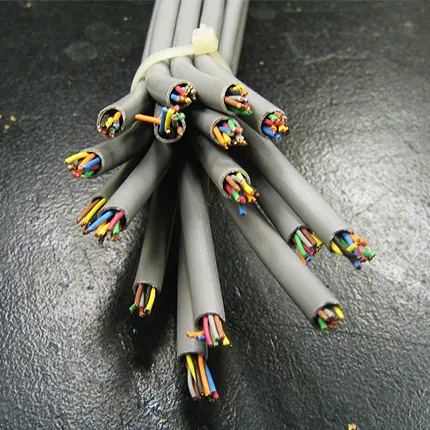I have many nerdy friends who have been Linux users for ages. But most of them don’t know such a thing as Openwrt exists or have never bothered to give it a try. It’s a very fun piece of software to play with and can be extremely useful for routing traffic. Wondering why it isn’t more popular/widely used.
I was actually the lead engineer on an Openwrt router. I hadn’t heard of it before that, but at one point I pretty much knew it inside and out. It’s been a few years since I left that company, so I’m a bit rusty at this point.
We made tons of custom features for our router. I did the backend and implemented UIs for most of them. The biggest feature I did though was a full REST API to be able to configure the router from a smart home controller, which was the company’s main product. I did both the router side (server) and the smart home controller side (client/caller), including the UI on the smart home controller. I spent almost a year on just that feature. But I was damn proud of it by the end.
I’ve been using OpenWRT as a hobbyist for over 15 years, and as a professional for over 6 years. Extremely underrated OS.
A vanilla install beats any stock router firmware by leaps and bounds. From there you can add pretty much any functionality you desire.
I currently use a Turris Omnia router made by CZ.NIC, who also maintains their own OpenWRT based distro called Turris OS.
I’ve been using it for years and now I basically can’t live without it. I consider OpenWrt compatibility in all of my router purchases. Currently using a Netgear R7800 and a Belkin RT3200, both are going strong.
It isn’t as widely used because it can be finicky to flash sometimes, and that’s if it’s even compatible in the first place. Even if it works, you may experience a drop in performance unless OpenWrt supports using the routers hardware acceleration features. If there’s no support, OpenWrt basically uses the onboard CPU to do routing and they’re usually not all that powerful.
I’m also running a few R7800 with OpenWrt units and they’re really nice.
Past Linux user here, not only do I use openwrt, but I base my routers choice on openwrt support, it’s weird to me there are long term Linux users who don’t know what openwrt is
What do you use nowadays?
You mean as an OS? Windows, but I feel fluent in Linux, used it for a few years, subbed here as a sentiment😄 I work in IT, mainly Windows administration but some Linux too
Was not expecting that! What a dark character arc :D
TIL there are Linux people that don’t use OpenWRT. I always assumed everyone in the Linux community used it. It’s great.
Works great with mt7621 based routers if anyone ends up looking for something compatible.
I run a proxmox and run PFsense on it. They are both pretty similar but there were more tutorials for PFsense at the time.
It’s a joy to use on x86 hardware though. You can run as many services as you want.
IMO, I’d run pf/opnsense on an x86 box, but openwrt on a low powered device…
Did that years ago with a pfSense firewall connected to the DSL modem, with OpenWrt APs around the house…until the hardware couldn’t support the next version of OpenWrt… (not enough RAM?)
I use dd-wrt a little bit, then tomato and variant (usb, toastman, fresh) then Merlin for maybe 5 years now.
Broadcom routers are mostly not openwrt compatible
I’ve used OpenWrt, DD-WRT, and Tomato firmware on the various routers I’ve had. I don’t think I’ve ever kept the stock firmware on any router I’ve owned.
I use pfSense at home now, but I’ve been considering switching to OPNsense. I still run OpenWrt on a portable router that I use when I’m traveling though. I won’t ever buy a router that I can’t run open source firmware on.
OPNsense is solid too, better than pfsense.
A portable router when you’re traveling?
This is my setup if you are interested: https://cameroncros.github.io/wifi-condom.html
Whether it is as secure as I would like, I am not sure, but it definitely seems better than just raw dogging a random wifi network.
Lmao. Thanks for the read and laugh.
A lot of places will restrict the number of devices you can connect. If I connect my router to the hotel WiFi, I can connect as many devices as I want. I also like having a firewall between my devices and the public WiFi. I can run a VPN on the router and have all of my devices go through it if necessary as well.
I use OpenWRT on my Linksys WRT3200ACM because I used to have a cable connection that suffered from bufferbloat. The SQM feature made a huge improvement. I eventually switched to a fiber connection from a different ISP which does not suffer from bufferbloat, but I kept OpenWRT on my router.
Yup. Running it on my home router, right now. It is awesome. A tiny, stripped down OS that you can install minimal packages on. Like a VPN client, or ad-blockers. If your router is compatible, I cannot suggest it enough.
Also, my router’s manufacturer had the gall to ask (force) me to sign up and get an ID with them in order to get to the back-end of my own router. Jesus Christ, privacy red flag much?
I could not install OpenWRT fast enough.
Fine on limited hardware like a router but if you’re going to use a full box for your router (or a VM), you’d probably want OPNsense for the ease of management and the fact that it’s targetted for hardware like that.
I actually took some older now somewhat defunct google wifi pucks and got them all set up on openwrt not too long ago. Really enjoy having them on something with a dedicated web UI and perfectly nerdy
Installed OpenWRT on my NetGear router like 2 years back, and it didn’t give me any trouble since then. BTW, the amount of configuration options it offer is mindbogglingly.
Just the capacity for network monitoring for troubleshooting makes it worthwhile. Not being able to SSH into Netgear’s firmware, let alone having access to tcpdump is an advantage right there.
I’ve used it and dd-wrt back in the day on cheap crashy routers. Also Tomato.
Haven’t tried it in a long time, but have an EAP225 v2 and v3 I’ve been considering slapping openwrt on.
Interesting. I have heard of it but so far I didnt bother since my router is quite versatile.
My biggest fear is that it borks itself and I sit there at 10 pm on movie night without a network or internet to troubleshoot.
If if I chose to use it I would need to have the current router as a fallback either running 24/7 or on a dead man switch.
been running it for years now, no weird sudden stability problems whatsoever.
Some routers have dual partition setup.
Active and backup. When flashing firmware, it is flashed to the backup partition. If the router boots successfully, the newly flashed backup partition becomes active and vice versa. If things screw up, nothing happens.
Thanks for the info. Thats not exactly what I meant. I‘m not afraid of the router itself breaking at installation but freezing for example and not being able to reboot. I usually dont tinker with mission critical stuff.
I know you likely have moved on but it would be interesting to actually figure out the cause. What steps would someone need to take to reproduce the issue?
The same thing can happen to manufacturer firmware. Only you’d have much less capability to troubleshoot, let alone fix it.
True but manufacturers are in big trouble if stuff like this breaks where I live so they are very eager to provide such service and additionally, the brand my router is from is generally considered rather good.
Not USian, I’m guessing?
Exactly.
Gotcha. Very different in the States in this regard.
My biggest fear is that it borks itself and I sit there at 10 pm on movie night without a network or internet to troubleshoot.
If you pick decent hardware eg. Netgear R7800 you won’t have issues. I’ve units of those running OpenWrt at home and a few small offices running for years with a lot of clients and traffic and they’re rock solid.
That’s exactly what I do. You can keep your ISP router and hook up your openwrt router to one of its lan ports and have two wifi networks.
It is not normal for it to just stop working
not at all.
Not at all what?
take a guess
Stable? In my experience OpenWRT is very stable. Can you share the hardware and software you were using?
my hardware configuration on openwrt is very stable too
I do know about it, but I don’t even have internet at home.
Though I do use DD-WRT on my WRT160NL which I use at school. For me it acts as firewall + setup-free VPN + DNS Ad blocker (NextDNS). I also have separate passwordless guest network on it if someone wants to use my router. Separate subnet, unbridged with net isolation and AP isolation enabled. And also QoS set to “Bulk” while my network is set to “Maximum”. And also forced DNS redirection enabled, so that everyone who doesn’t use DoT or DoH uses NextDNS.It cannot run modern versions of OpenWRT.
You really want to either update to a supported release or stop using it entirely. It is very insecure to run network equipment with known security issues
It is still much more secure than to stop using it and let your other devices go naked.
Not necessarily. I would at least keep your eye out for something newer.












